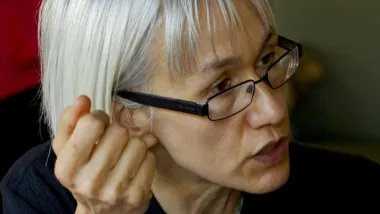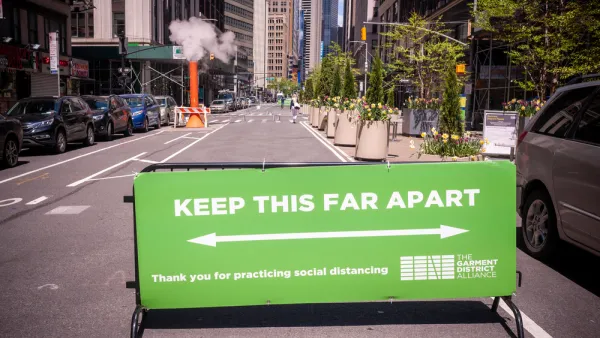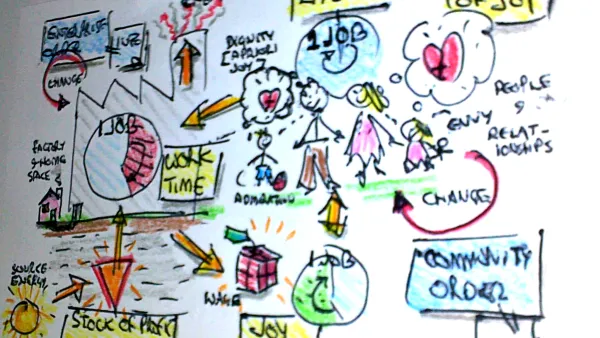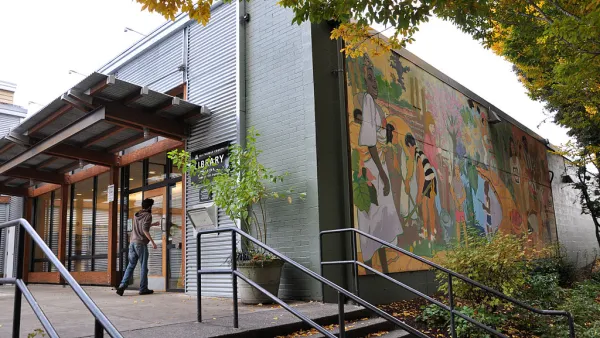Some people choose to work in planning because they see it as a relatively interesting and stable job. Others have dreams of being the equivalent of an all-powerful SimCity-style mayor. However, many choose planning as a career because they want to make a difference in the world. They want to do good and to help those who are the least advantaged. They are attracted by the potential, if limited, for planning to foster environmental justice and social equity.
Some people choose to work in planning because they see it as a relatively interesting and stable job. Others have dreams of being the equivalent of an all-powerful SimCity-style mayor. However, many choose planning as a career because they want to make a difference in the world. They want to do good and to help those who are the least advantaged. They are attracted by the potential, if limited, for planning to foster environmental justice and social equity.
But figuring out the best strategies for doing good can be a bit complicated, particularly for students entering the field. One can certainly read widely and discuss issues with local peers. However, several groups provide larger networks for learning about these issues, debating straegy, and finding support. In the U.S., three of the longer-running groups--established in the 1970s and 1980s--are particularly important.
Architects, Designers, and Planners for Social Responsibility (ADPSR), established in the early 1980s, is a network of professionals interested in social issues from opposition to war to green building. A current project is organizing architects to boycott prision design work. Its main chapters are in New York and the Bay Area. Many members are architects in fairly traditional private practices who want to meet others with social concerns, although as the name indicates, their membership extends beyond this group. They have a web site, local list serves and events, and an affiliated book publisher New Village Press.
The Association for Community Design (ACD) was founded in 1977 as a network of community design and neighborhood plannning centers. The organization is still dominated by those groups of folks who are making a difference rather than just talking about change. Their focus on action and not just criticism is impressive. Members are particularly interested in affordable housing and participatory design. While many members are architects, planners can feel at home given the non-profit and participatory focus. They have a web site and annual conferences.
Planners Network (PN) members are planners and activists interested in social and environmental justice. Founded by Chester Hartman in 1975, PN has a web site, quarterly magazine--Progressive Planning, monthly e-newsletter, chapters, and annual conferences. A disorientation guide provides information for students. Members are a mix of planning students, academics, professionals, and community activists. Unlike ADPSR and ACD where the design fields are dominant, the focus of PN is on planning, if broadly defined. The organization issues statements on issues such as the war in Iraq and the Israeli Wall.
In 2007 these three groups held coordinated conferences in New Orleans and Baton Rouge with sponsorship from Planetizen (thanks!).
Of course there are other organizations. There has been a recent trend for architects to form groups interested in disaster relief and many have attracted planning students. Some divisions of the American Planning Association--particulary Planning and the Black Community, GALIP, Planning and Women, Latinos and Planning, and Indigenous Planning also deal with some of the same topics and concerns. However, PN, ACD, and ADPSR have a long tradition of being independent voices for social change. For planning students, and others, interested in making a difference they can provide important support.
Ann Forsyth is on the Editorial Board of Planners Network and the Board of the Association for Community Design. Over the years has been a member of a majority of the organizations and APA divisions mentioned in this blog. This is the first part of a two-part blog.

National Parks Layoffs Will Cause Communities to Lose Billions
Thousands of essential park workers were laid off this week, just before the busy spring break season.

Retro-silient?: America’s First “Eco-burb,” The Woodlands Turns 50
A master-planned community north of Houston offers lessons on green infrastructure and resilient design, but falls short of its founder’s lofty affordability and walkability goals.

Delivering for America Plan Will Downgrade Mail Service in at Least 49.5 Percent of Zip Codes
Republican and Democrat lawmakers criticize the plan for its disproportionate negative impact on rural communities.

Test News Post 1
This is a summary

Test News Headline 46
Test for the image on the front page.

Balancing Bombs and Butterflies: How the National Guard Protects a Rare Species
The National Guard at Fort Indiantown Gap uses GIS technology and land management strategies to balance military training with conservation efforts, ensuring the survival of the rare eastern regal fritillary butterfly.
Urban Design for Planners 1: Software Tools
This six-course series explores essential urban design concepts using open source software and equips planners with the tools they need to participate fully in the urban design process.
Planning for Universal Design
Learn the tools for implementing Universal Design in planning regulations.
EMC Planning Group, Inc.
Planetizen
Planetizen
Mpact (formerly Rail~Volution)
Great Falls Development Authority, Inc.
HUDs Office of Policy Development and Research
NYU Wagner Graduate School of Public Service






























